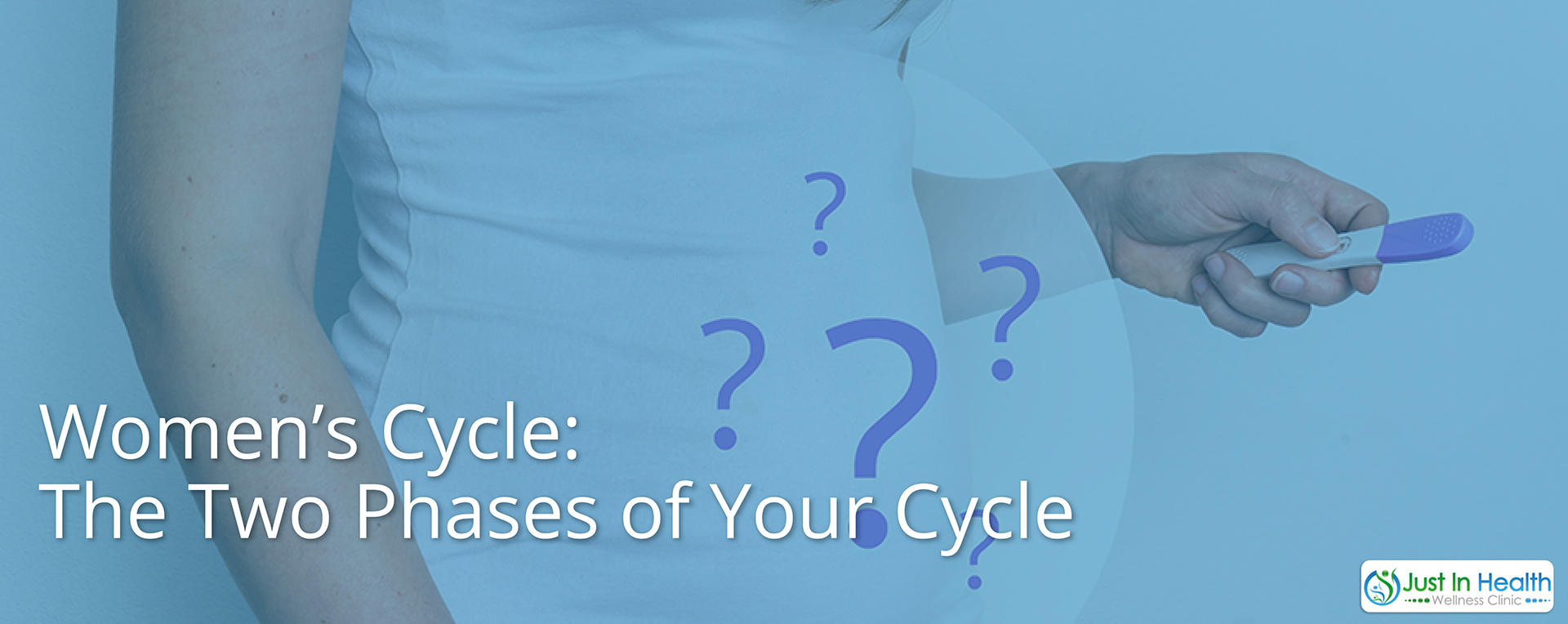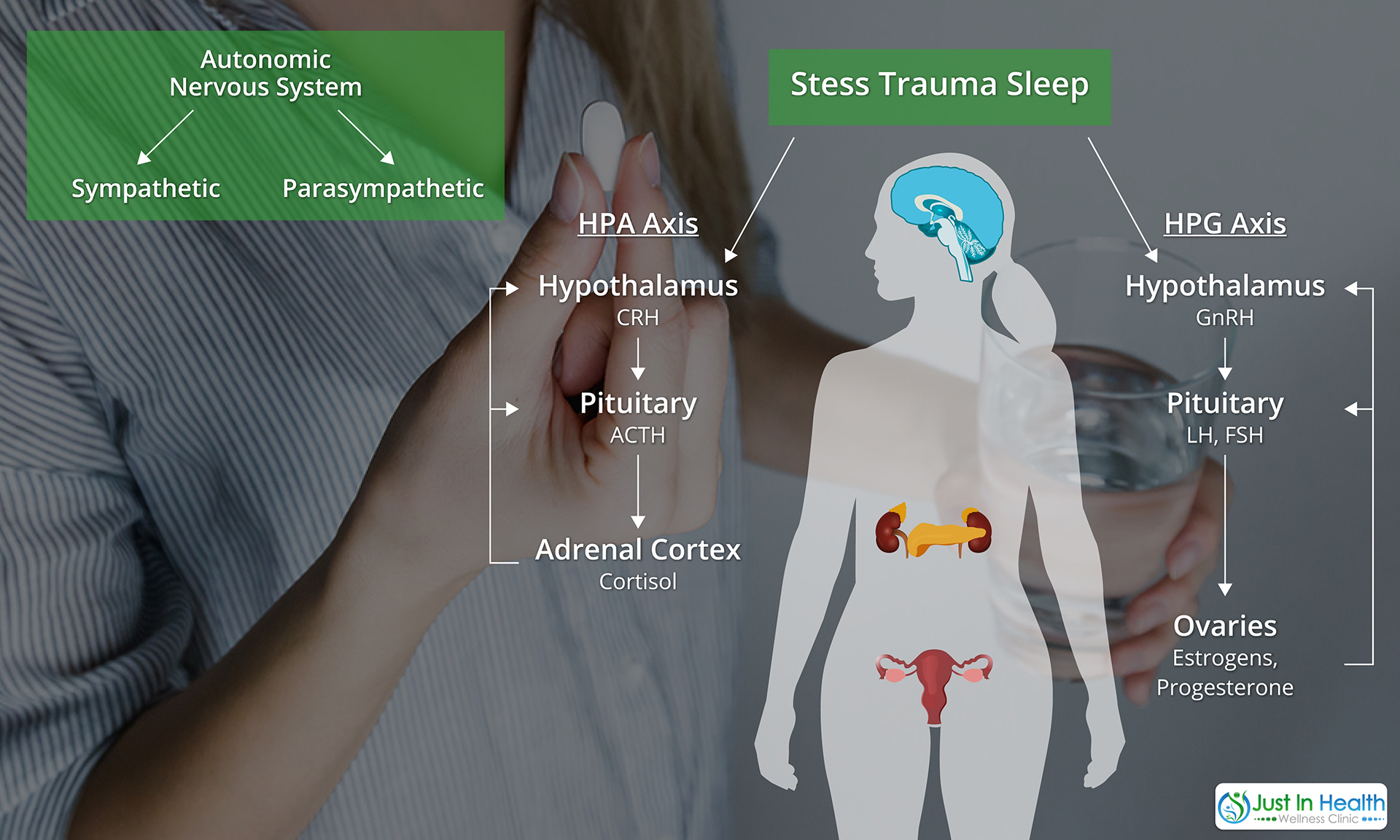
By Dr. Justin Marchegiani
There are many natural remedies for hormone imbalance in the functional-medicine world, yet they tend to the be the last line of defense most women reach for. It’s easier to get a birth control pill or antidepressant to fix the symptoms of hormone imbalance, but this does nothing to address the underlying cause.
If you’re a female and suffering from infertility, PMS, polycystic ovarian syndrome (PCOS), or other hormonal symptoms, this is a strong sign your body is out of balance and not expressing optimal health. Fertility and hormone balance is a natural by-product of health, and without it, our species wouldn’t be here today. I urge every woman to dig a little deeper into what’s driving her infertility and/or female hormone imbalances.
Just 30 to 40 years ago, women would routinely get pregnant on their honeymoon. Today, women are spending upward of $15,000 per in vitro fertilization (IVF) treatment, some needing multiple treatments to conceive.
It is possible to mimic your hormones with Follistim, Lupron, or Clomid to manipulate your brain into thinking you are healthy enough to get pregnant. Your body is wise, and is not letting you have a child for a reason; it knows the hormonal environment is not optimal to produce a healthy baby.
The hidden chemical stressors in your body can activate certain genes epigenetically. When these genes are activated, it predisposes you and your child to autoimmune/chronic inflammatory conditions, like asthma, heart disease, allergies, and learning disorders (1, 2, 3).
When we look at the underlying cause of infertility, 40% is on the woman’s side, 40% is on the man’s side, and 20% is unknown.
Both men and women should adhere to similar dietary and lifestyle principles to help support and nourish their bodies. A diet that is nutrient dense, anti-inflammatory, and low in toxins is essential for optimal health and for a growing a baby.
Women who are trying to get pregnant need to make sure their diet has adequate fat for the formation of their soon-to-be child’s nervous system; adequate meal timing to stabilize blood sugar; and the avoidance of all toxins from pesticides, grains, and refined foods.
If you are trying to get pregnant, you need to form a cohesive team with your partner. There needs to be a combined effort of the couple engaging in health-sustaining habits. Though the female grows the child inside her body, the quality of the sperm and the support regarding nutrition and lifestyle habits are just as important.
As long as your partner's sperm count, motility, and morphology have been assessed and there are no issues regarding the female's reproductive anatomy, then you are a great candidate to start a natural female-hormone-balancing program.
There may be 5% of women that need IVF treatment to conceive. I personally would recommend IVF last. The natural hormone-balancing diet and lifestyle programs can work over 90% of the time. IVF may help you get pregnant, but it does nothing to ensure a healthy pregnancy and optimal health for your child.
According to research, as well as my clinical experience, women that have IVF or go into a pregnancy unhealthy to begin with tend to suffer from more hormonal related issues post pregnancy, have a more difficult time losing weight, and have an increased risk for postpartum depression (4).
Sperm counts have been dropping over the last 40 years significantly and so have the reference ranges regarding what normal may be. Due to these drops in the reference range, I urge men to be in the top 25% of the range to ensure adequate health. Consider anything in the middle of the range inadequate to standards just 30 to 40 years ago. (5)

The first half of your cycle is the follicular phase. This is where estrogen predominates. The second half of your cycle is the luteal phase. This is where progesterone predominates.
The Domino Effect of Healthy Hormones and Pregnancy
Progesterone and estrogen drop at the end of the cycle, which signals bleeding, or your period. The sloughing off of your endometrial lining is important to reset your body so it has a chance for pregnancy the next time it ovulates.
The bleeding that occurs during your period stimulates FSH—a brain hormone. FSH stands for follicle-stimulating hormone which stimulates the follicle to start growing.
As the follicle starts growing, it stimulates estrogen to increase. As estrogen increases, it starts to thicken the endometrial lining. Estrogen stimulates growth, which is needed for the uterine lining.
As estrogen reaches its peak around day 12 or 13 of your cycle, ideally, it stimulates an increase in LH (luteinizing hormone).
When LH increases, it stimulates progesterone to increase around day 15 of your cycle.
The rise of progesterone, which was preceded by a rise in estrogen, signals ovulation. This when you can get pregnant, and it’s only about a three-day window. Progesterone causes the uterine tissues to mature (to grow up), which provides the right environment for the egg to implant into it.
The egg is ejected into the fallopian tube where it has the potential to come in contact with sperm as the egg makes its way down to the uterus.
The fertilized egg embeds itself into the uterine lining as the corpus luteum (the scar from where the egg formed in the ovary) stimulates progesterone through the production of human chorionic gonadotropin (HCG).
Progesterone and estrogen drop out around day 27 or 28 of the cycle, which then signals menstruation (your period). The whole process then repeats itself again.
Fun Fact: HCG is what is typically tested to confirm pregnancy. Elevated HCG will get you a positive on your home pregnancy test.
The luteal phase needs to be at least 12 to 15 days long to ensure there is enough time for adequate progesterone to be made. If progesterone levels fall off early in the luteal phase (symbolized by the red lines above), it’s because of stress. Stress comes in physical, chemical, and emotional factors. Essentially, progesterone, your pro-gestational hormone that holds the egg in place, actually can get converted downstream in the cortisol.
With chronic stress we see progesterone falling out early in the cycle, which can make it very difficult to sustain a pregnancy. This progesterone deficit makes it very difficult for the egg to stay implanted, and it will eventually slough off causing a potentially thicker period that particular month, or maybe even no period at all. Low progesterone over time can cause your cycle to be anovulatory (without a period), or you may have even been told you have premature ovarian failure.
Throughout our cycle, on average, we have 22 to 25 times more progesterone than estrogen. This is a normal, healthy balance. When stress occurs and progesterone gets converted downstream, we start seeing a state of what’s called estrogen dominance. We start seeing an excess of thickening of the uterine lining. Women may notice fibroids, endometriosis, and fibrocystic breasts.
These hormone imbalances may manifest themselves at the end of your cycle as PMS, headaches, fatigue, migraines, breast tenderness, and uterine pain. All these symptoms are primarily driven by a state of estrogen dominance.
PCOS (polycystic ovarian syndrome) occurs when androgens in the female cycle become elevated. As androgens elevate in the cycle, it throws off the upstream brain hormones, so communication from the brain to the ovaries becomes disconnected (6).
One of the most important triggers of PCOS is chronic ups and downs in blood sugar (reactive hypoglycemia), or insulin resistance. The elevation in insulin up-regulates certain enzymes in the body (17–20 lyase), which can accelerate the conversion of female hormones to male hormones (testosterone). That’s why it's common to see acne, abnormal hair growth, and ovarian cysts as a by-product (7, 8).
When we take birth control pills (BCPs), we shut down the upstream signaling to our brain known as the HPG axis (hypothalamus, pituitary, gonadal axis—see picture below). FSH and LH, essentially, are the conductors of this beautiful hormonal orchestra. In this orchestra we have the strings, the flutes, and all the different instruments you can imagine. If the conductor of the orchestra goes on vacation, it’s very easy for this beautiful music to sound like noise.
Taking this analogy back to hormone land, as hormonal imbalances occur due to physical, chemical, and emotional stressors, they essentially mug the conductor. They knock the conductor off the stand, and the hormones start to go awry.
Women who take BCPs do see a benefit. Their hormones may stabilize, which may help their mood, PMS, and skin issues in the short term. The ups and downs of the hormones in the cycle are somewhat leveled out by this artificial, yet steady, bombardment of hormones.
The symptom-relief experience from BCPs is real. There are ways to produce the same results, if not better, through natural hormone-balancing protocols that address the underlying cause of the issues. When the underlying cause is addressed, there is less chance of the typical side effects of BCPs, including weight gain, blood clots, increased risk of a breast cancer, and potential difficulty conceiving down the road.
“Women who were on oral contraceptive birth control pills may experience a few months of being infertile while the synthetic hormones work their way out of their body. Women who were on the Depo shot on the other hand, can experience infertility between six months to a year.”
~Dr. Lauren Streicher of Gynecologic Specialists of Northwestern
If you are using a BCPs to prevent pregnancy, there are other natural non-hormonal methods out there. My favorite is the rhythm method (if you are in a stable long-term relationship). Other methods can be used, including a non-hormonal IUD (ParaGard). This can be used in conjunction with a diaphragm and/or a condom for extra security. If your hormones are stable, there is only a small window in your cycle when pregnancy can occur, so make sure proper precautions are made.

If you are struggling with hormonal-related symptoms and are looking to get pregnant, there are some action items you should make ASAP!
Make the right diet and lifestyle changes to stabilize your hormones and blood sugar for success.
Avoid common toxins that may come from pesticides in your food and chemicals in your makeups and hygiene products. The toxins in these products are xenoestrogens in nature and can mimic the hormone estrogen. Most women are already in a state of estrogen dominance, and this bombardment off additional synthetic estrogen only makes the problem worse.
Get assessed! If you are not assessing, you are guessing! If you are having hormonal issues and you want to get pregnant, you need to see where the root of your hormonal issues are coming from.
Are the hormonal imbalances coming from a thyroid issue, adrenal issue, female hormone issue, or chronic infection? It may even be a combination of all of them like I see with most patients.